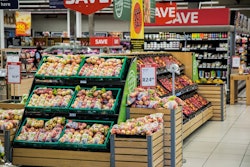
A robust healthcare system is critical to the portion of population seeking medical assistance. And, a robust food supply chain is critical to 100% of the population. But, what we do over the next few weeks is mission critical to maintaining a secure food supply.
The Coronavirus disease (COVID-19) pandemic is unprecedented in this lifetime, causing disruption that touches everyone in some way. Unlike natural disasters, the impact is not geographically specific, so infrastructure remains intact. As a result, this crisis presents unique challenges, but also rare opportunities. And once it passes, supply chains will be in a greater position to advance, but only if sound decisions are made and actions taken now.
The food industry is experiencing disparate impacts across various channels. Due to the closing of restaurants, bars, schools, entertainment venues and travel, the foodservice sector is practically at a standstill. Consumers who have not previously shopped via e-commerce platforms are now doing it out of necessity, accelerating the online grocery channel into the new norm. This is causing temporary shortages and outages in brick-and-mortar stores and a strain on e-commerce fulfillment capacity.
In fact, there are anecdotal reports of brands selling staple goods, seeing demand increase anywhere from 20-250% in the short term. This causes pressure throughout the supply chain’s ingredient and packaging material suppliers, food manufacturers, logistics and fulfillment providers.
All of this comes at a time when each link may be dealing with their own challenges related to the pandemic, including a workforce handling a disruption of family life due to school closures or even family illness; trying to maintain a safe and hygienic workplace; and daily developments and directives from authorities impacting how they can operate.
Despite these challenges, there are still no major breaks in the food system. However, the longer the crisis persists, it is likely these issues will surface.
What can we as an industry do to mitigate these risks?
Retail brands
The industry is experiencing increased demand due to higher velocity with current customers, as consumers are provisioning and eating more at home. While demos and in-person sales meetings have come to a screeching halt, forecasted expanded distribution to new channels and customers later in the year will likely be delayed. However, brands must be ready to execute on new products and extensions when customers reschedule product re-sets.
Temporary out-of-stocks of well-known brands can be opportunities for smaller brands to acquire consumers looking for alternatives. Additionally, as consumers turn to e-commerce, expanded exposure online can be fruitful.
Take advantage of the bump on the consumption side. If capacity is available, now is the time to grow inventories to mitigate risk of future supply chain disruptions.
Communication is key. While new sales might not be generating as planned at the moment, staying in touch with consumers, customers and supply chain partners via social media, email and phone calls can drive velocity and awareness. Goodwill can be built even if all orders cannot be filled.
Suppliers and manufacturers
Suppliers and manufacturers should stock up on key raw materials and those with complex or at-risk supply chains. While there has not yet been a shortage of ingredients and critical materials, the longer this continues, the more items could be at risk. Ensure there is enough time to secure alternative sources. The issue is not with supply, but with demand. While a widespread shut down would be an extraordinary and unprecedented event, the future is uncertain. Be proactive on orders and stay ahead of this to help get the chain back on track. Maximize capacity by adding hours and shifts to the production line if possible. Focus should be on productivity and minimizing downtime for changeovers, etc.
Logistics providers
While foodservice and retail food distribution systems are separate, they are somewhat parallel paths to consumers. With consumers focused less on dining out and more on at-home options, logistics executives should think about the possible opportunities to re-deploy assets from foodservice to retail or e-commerce. Direct-to-consumer and online buying is growing exponentially at this time. There is a reason Amazon is hiring 100,000 new employees.
While there are many unknowns ahead, the industry has an opportunity for every link in the food supply chain to be forged by this crisis and come out on the other side stronger than ever. It will require laser focus each day and proactively responding to the challenges presented and those that could arise, while maintaining a vision for the ‘end game’ and the eventual return to normalcy.

















